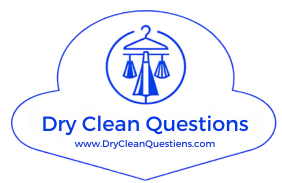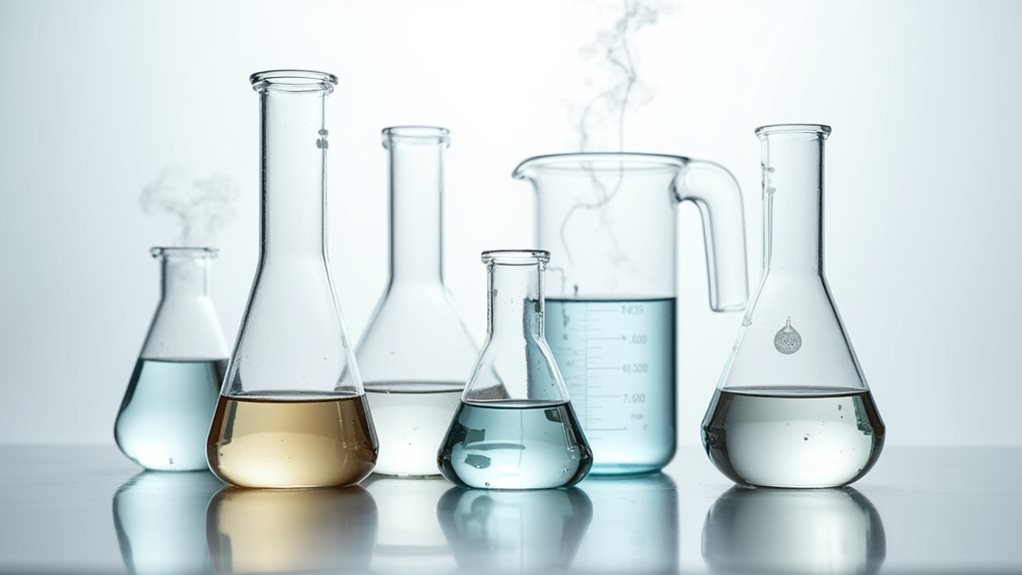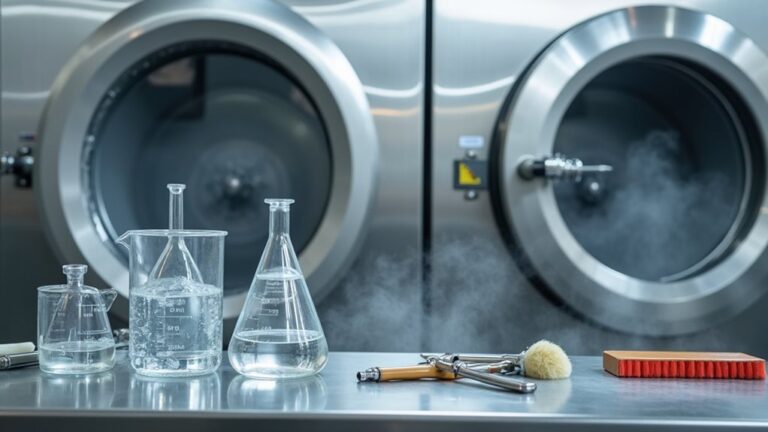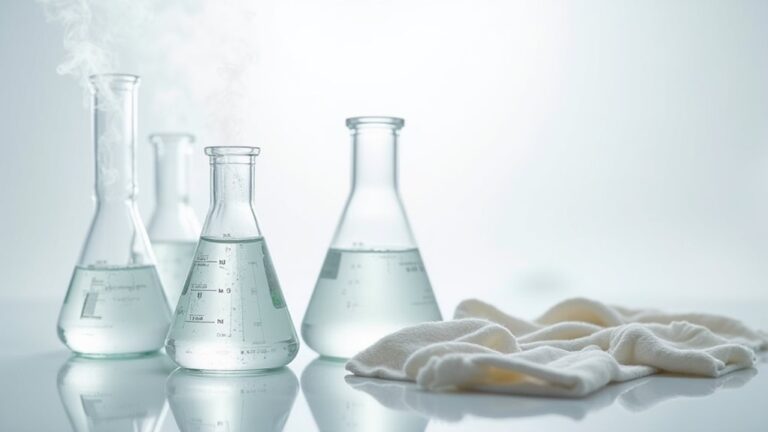When you drop off your clothes at the dry cleaner, they’re most likely treated with perchloroethylene (PERC), a powerful solvent used by about 60% of U.S. facilities that’s unfortunately classified as a potential carcinogen. You might also encounter hydrocarbon-based alternatives, gentler siloxane solvents, or eco-friendly liquid carbon dioxide technology, though these represent smaller market shares. Each chemical comes with its own trade-offs between cleaning effectiveness and health considerations that’ll help you make smarter choices.
Perchloroethylene: The Industry Standard Solvent
When I first walked into a dry cleaner as a curious teenager, the sharp, sweet smell that hit my nose was likely perchloroethylene, or PERC as industry folks call it, a chemical that’s been the backbone of dry cleaning since your great-grandparents were young.
You’ll find this solvent in roughly 60% of US cleaners today because of its effective grease-cutting properties, though I’ve learned it’s classified as a potential human carcinogen and neurotoxicant.
The Environmental Protection Agency is now scrutinizing PERC under updated safety laws, while states like California have mandated a complete phase-out by 2023.
Despite solvent recovery systems reducing waste, health concerns about environmental contamination persist, making the dry cleaning industry’s evolution increasingly necessary for worker and consumer safety.
PERC residues can remain on clothing even after cleaning, which is why experts recommend allowing freshly dry cleaned garments to air out before wearing them to minimize exposure to potentially harmful chemical remnants.
Hydrocarbon and Petroleum-Based Alternatives
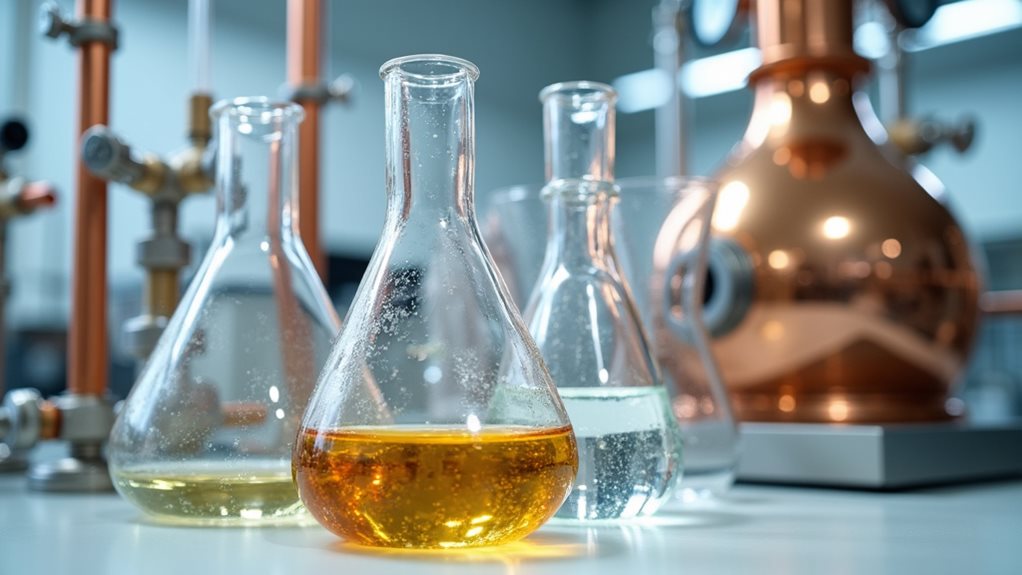
As the dry cleaning industry grapples with PERC’s health concerns, you’ll notice many cleaners have turned to hydrocarbon solvents, petroleum-derived alternatives that now serve about 20-25% of US facilities.
Though I’ve discovered their “green” marketing can be surprisingly misleading. Don’t be fooled by those “organic” labels—these petroleum-based solvents are still volatile organic compounds (VOCs) that contribute to ozone formation and respiratory issues.
Don’t let “organic” labels fool you—petroleum-based dry cleaning solvents remain volatile compounds that harm air quality and respiratory health.
High-flash hydrocarbons offer improved safety by reducing flammability risks, but animal studies suggest potential cancer hazards remain. While their cleaning performance matches traditional methods, environmental regulations still apply.
Hydrocarbon solvents maintain the essential properties needed for effective dry cleaning, including chemical stability and the ability to dissolve oils and greases while remaining gentle on delicate fabrics.
I’ve watched the market shift toward truly safer options like liquid carbon dioxide and professional wet cleaning as consumers become more health-conscious.
Siloxane: The Gentle Cleaning Solution

While watching the dry cleaning industry evolve over the past decade, I’ve been particularly impressed by siloxane—specifically decamethylcyclopentasiloxane (D5)—which represents what I consider the gentlest revolution in fabric care you’ve probably never heard of.
This biodegradable cleaning solvent offers everything you’d want: it’s non-toxic, skin-friendly, and won’t fade your favorite silk blouse or damage delicate fabrics like traditional perchloroethylene might. Companies like Green Earth have championed this gentle cleaning solution, though fewer than 5% of cleaners currently use it (honestly, that number should be higher 🤷♀️).
What impresses me most is siloxane’s minimal environmental impact—it breaks down into harmless silica and carbon dioxide, making it a truly sustainable choice for conscious consumers. Professional dry cleaners typically select solvents based on fabric type, stain composition, and safety considerations when determining the most appropriate cleaning method for each garment.
Carbon Dioxide and Green Technology Options
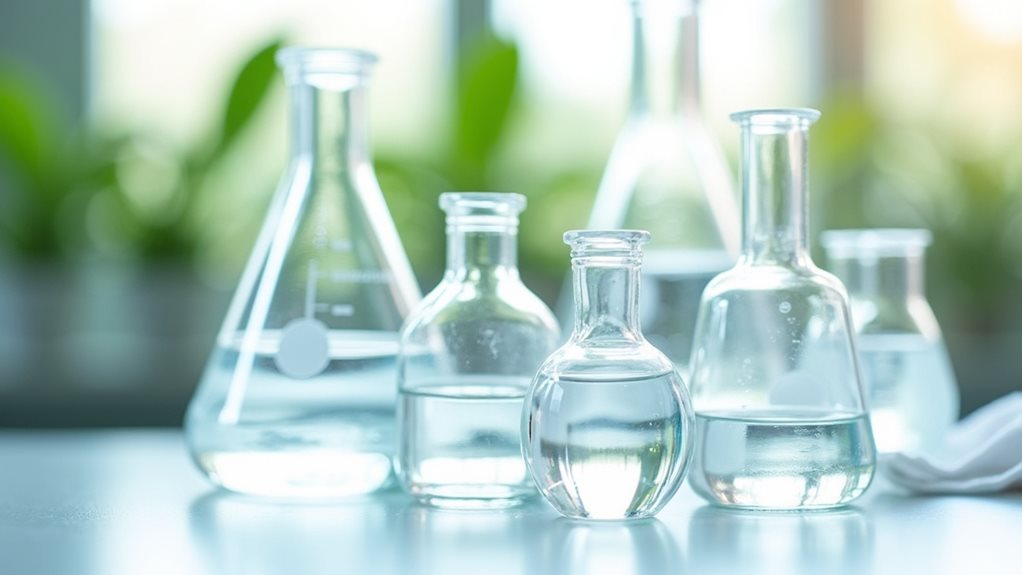
You’ve probably wondered if there’s a way to clean your clothes without worrying about toxic chemicals seeping into your favorite sweater, and liquid carbon dioxide technology offers exactly that promise, though it comes with its own fascinating trade-offs.
While this method transforms CO2 from gas to liquid under high pressure, creating a surprisingly effective cleaning solution that’s biodegradable and safe, you’ll find yourself facing the reality that it releases 6 to 10 pounds of CO2 per cycle, which honestly makes my environmentally-conscious heart do a little conflicted dance 🌱.
The technology requires specialized, expensive equipment that’s kept many dry cleaners from adopting it, but understanding both its gentle effectiveness and environmental impact concerns will help you make informed choices about your fabric care options.
Liquid CO2 Process
One promising alternative that’s been gaining traction in the dry cleaning world is the liquid carbon dioxide process, a technology that transforms regular CO2 into a powerful cleaning solvent under high pressure.
This environmentally friendly method produces minimal hazardous waste compared to traditional chemicals, making it gentler on both fabrics and our planet.
However, like most good things in life, it comes with trade-offs that’ll make you think twice:
- Limited cleaning capabilities – certain stubborn stains just won’t budge, leaving you frustrated 😤
- Massive initial investment – the equipment costs can crush small business dreams
- Hidden environmental cost – each cycle releases 6-10 pounds of CO2 emissions, adding to greenhouse gas concerns
While it’s excellent for cleaning fabrics gently, you’re still contributing to our carbon footprint.
Unlike traditional chlorinated hydrocarbons like tetrachloroethylene that have dominated the industry for decades, liquid CO2 offers a safer alternative for both workers and the environment.
Environmental Impact Concerns
The CO2 process might seem like the perfect green solution, but here’s where things get complicated, and I learned this the hard way when researching eco-friendly options for my own clothes.
While liquid carbon dioxide beats perchloroethylene (PERC) for safety, it still releases 6-10 pounds of CO2 per cycle, which honestly made me pause.
You’ll find that many “green” dry cleaning solvents aren’t as clean as advertised—synthetic petroleum solvents remain volatile organic compounds (VOCs) that contribute to ozone formation and respiratory issues.
Even siloxane, marketed as a biodegradable solvent, carries potential health hazards.
The truth is, regulatory frameworks are still catching up, evaluating the environmental impact of these alternative solvents, leaving us consumers maneuvering murky waters.
These eco-friendly alternatives, including hydrocarbon-based cleaners and liquid silicone, are designed to maintain the same level of garment care and stain removal effectiveness as traditional solvents while addressing environmental concerns.
Health and Environmental Impact Considerations
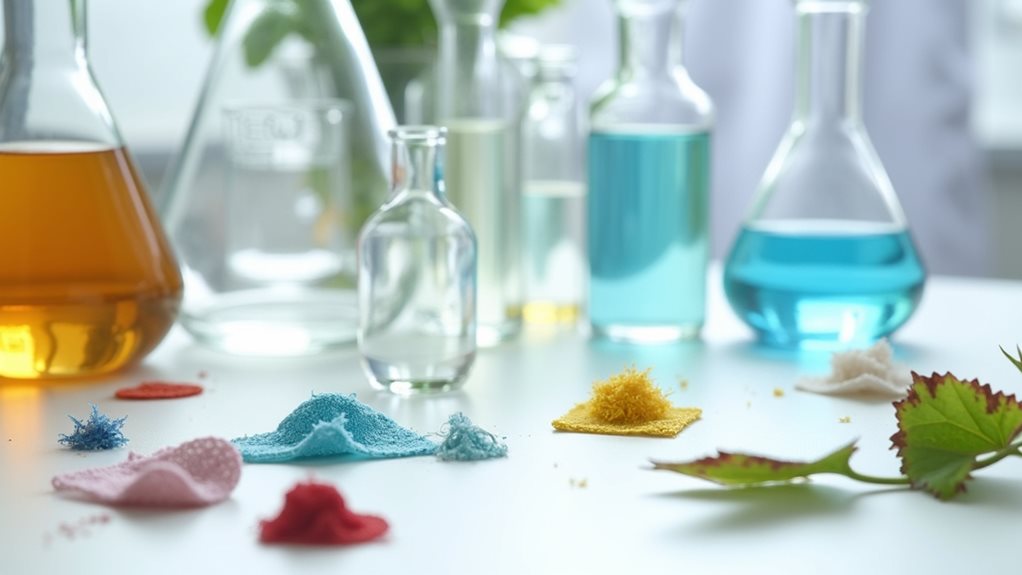
While most of us don’t think twice about dropping off our favorite blazer at the local dry cleaner, the chemicals swirling around in those mysterious machines deserve serious attention, especially when you consider that perchloroethylene (PERC) – the solvent cleaning about 70% of America’s dry-cleaned clothes – has earned itself a spot on the “potential human carcinogen” list.
These volatile organic compounds create environmental risks that extend beyond the shop’s walls, affecting nearby communities through chronic exposure to respiratory issues and cognitive impacts.
The toxic fumes from dry cleaning operations don’t stay contained – they seep into surrounding neighborhoods, silently harming residents’ lungs and brains.
Here’s what makes PERC particularly concerning:
- Workers face daily exposure to carcinogenic effects, even at levels below 50 ppm
- Your neighborhood suffers when these dry cleaning solvents contaminate groundwater and air
- Alternatives to PERC aren’t perfect either, with regulatory assessments revealing their own health impacts
Modern dry cleaning facilities are implementing closed-loop systems and proper ventilation to minimize chemical exposure to both workers and customers.
Choosing the Right Dry Cleaning Method for Your Garments
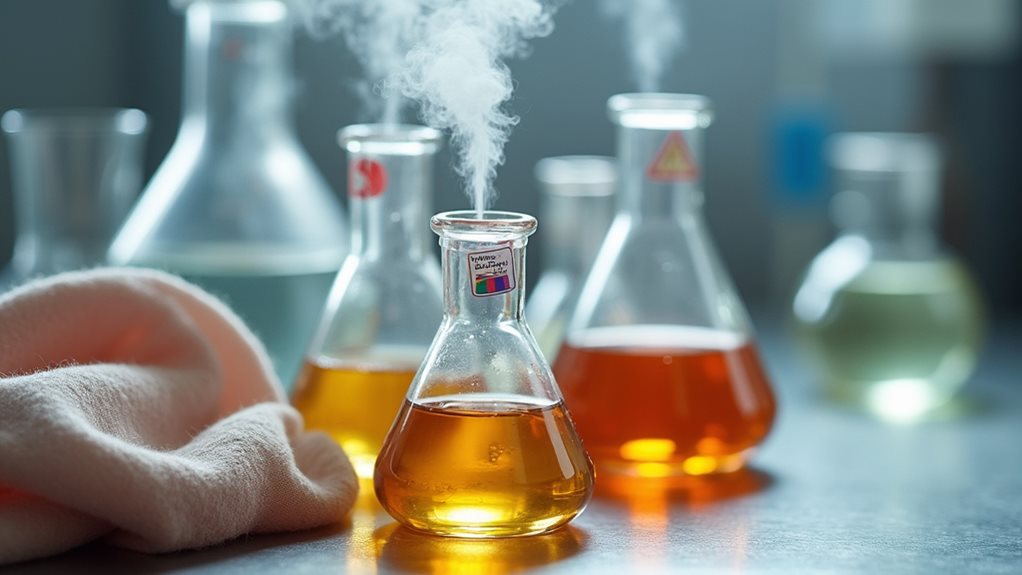
Armed with knowledge about PERC’s risks and environmental impact, you’re probably wondering how to steer your next dry cleaning decision without accidentally exposing yourself to unnecessary chemicals.
When I first learned that 60-65% of cleaners still use PERC despite health risks, I started asking pointed questions about solvents before dropping off my clothes 🤷♀️.
Smart consumer choices begin with inquiring about alternative cleaning methods like liquid carbon dioxide or professional wet cleaning, which work beautifully without harmful residues.
For delicate fabrics like silk, seek cleaners using gentler solvents rather than risky hydrocarbon options.
Remember to avoid leaving freshly cleaned garments in your car afterward—those lingering chemical vapors need proper ventilation to minimize exposure.
Additionally, always air out your dry-cleaned clothing before wearing them to reduce potential exposure to residual chemicals that may remain on the fabric after the cleaning process.
